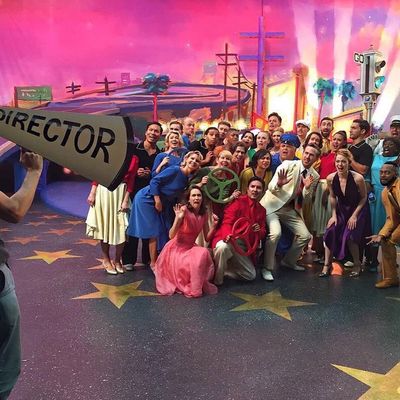
This post discusses the ending of La La Land in detail.
La La Land is a very good movie, but it becomes a great one during its ending sequence — when two former lovers, Mia and Sebastian, see each other one last time and share a fantasy of the life they could have had, a wordless dream ballet that washes over them as Sebastian plays “their” song on the piano.
The sequence grants them a magical do-over. When Mia first walks into the restaurant where Sebastian’s playing, he notices her, instead of walking by in a distracted huff. When Mia mounts her one-woman play, he shows up to applaud, instead of ditching her. When Mia goes abroad for her first major film, Sebastian is there by her side. He shares all of this with her through his song, or she imagines it while hearing him play, or perhaps they share this bittersweet dream together, before they have to accept reality once again.
As writer/director Damian Chazelle revealed when La La Land won Best Picture at the New York Film Critics Circle Awards Tuesday night at TAO Downtown, that moment, which can be interpreted in a number of ways, was actually inspired by a classic silent film with its own contradictory ending. Apologizing in advance for spoiling the ending — which this post will also do, so watch out — Chazelle shared the plot of the 1927 film 7th Heaven.
“It’s a love story about a man and a woman, [played by] Charles Farrell and Janet Gaynor,” he explained. “Charles Farrell goes off to war, dies, Janet Gaynor is informed of his death and holds on to this irrational hope that he’s not dead. Her friends, her family tell her she’s crazy, stop dreaming, be realistic, get on with your life. She insists he’s coming back.” Then, as the film is about to end in that dark, depressing place, “there’s an abrupt cut back to the battlefield. Charles Farrell is suddenly alive, inexplicably, and makes his way back home. The last scene, he comes home, they kiss, swell of music, fade to black.”
This magical do-over, Chazelle said, made him think, and he came up with a couple of possibilities for how it came to be. One, “the studio fucked over the director,” Frank Borzage, by insisting that the film have a happy ending even if it didn’t make sense. “They reshot something, cobbled it together, and that’s what you got.” An even more cynical read would be that the female character is actually imagining her happy ending, and what the audience is seeing is her “descent into total insanity.” But the third interpretation, the one Chazelle prefers, is that the male character really did die, and that he is also alive at the end.
“The reason those two things can coexist is because of how deeply this woman loves him,” Chazelle said. “The emotion was so deep and profound that the laws of time and reality and physics stop existing.” This idea, that two contradictory realities can coexist, helped Chazelle prepare for the challenge of tackling a musical. “It’s an idea that speaks to what movies can do, which is that emotion can override everything,” he said. “You can draw a straight line from that idea to every musical ever made. If you feel enough, you suddenly have a 90-piece orchestra emerge from the heavens and accompany you in song, which is so ridiculous and absurd and yet feels so right sometimes, at least to me. It’s where we allow movies to act like dreams.” And perhaps, knowing this allows us to have yet one more interpretation of La La Land’s ending — that Mia and Sebastian actually did have the magical love affair where everything went right and they ended up together, and the love affair where reality intruded and they ended up having separate lives. Both can coexist, in a city of dreams.

